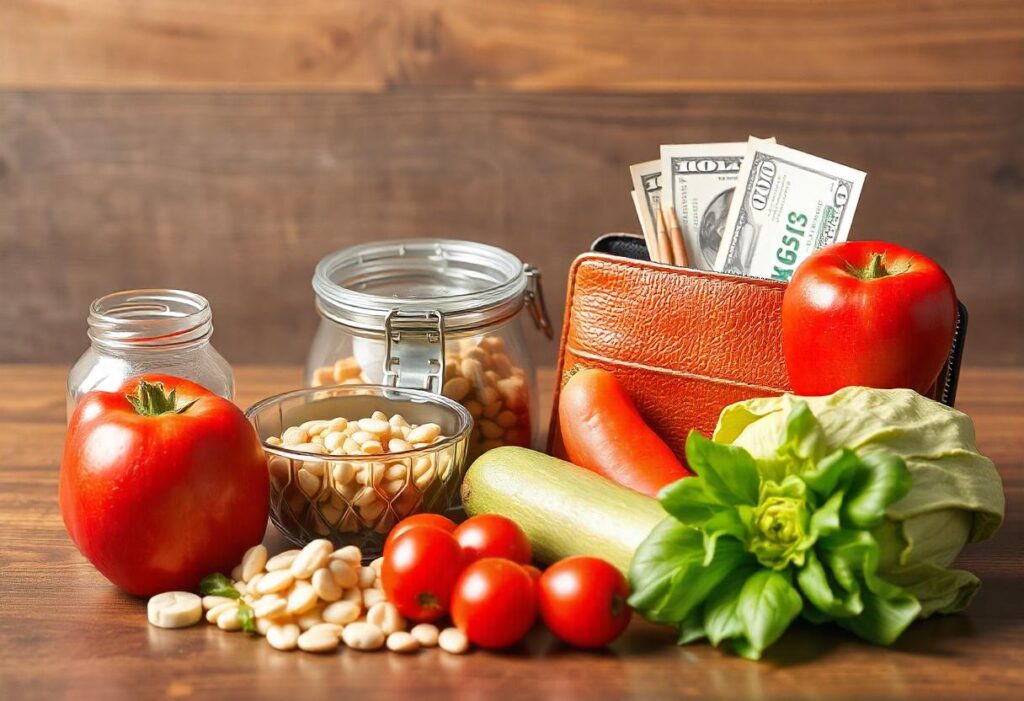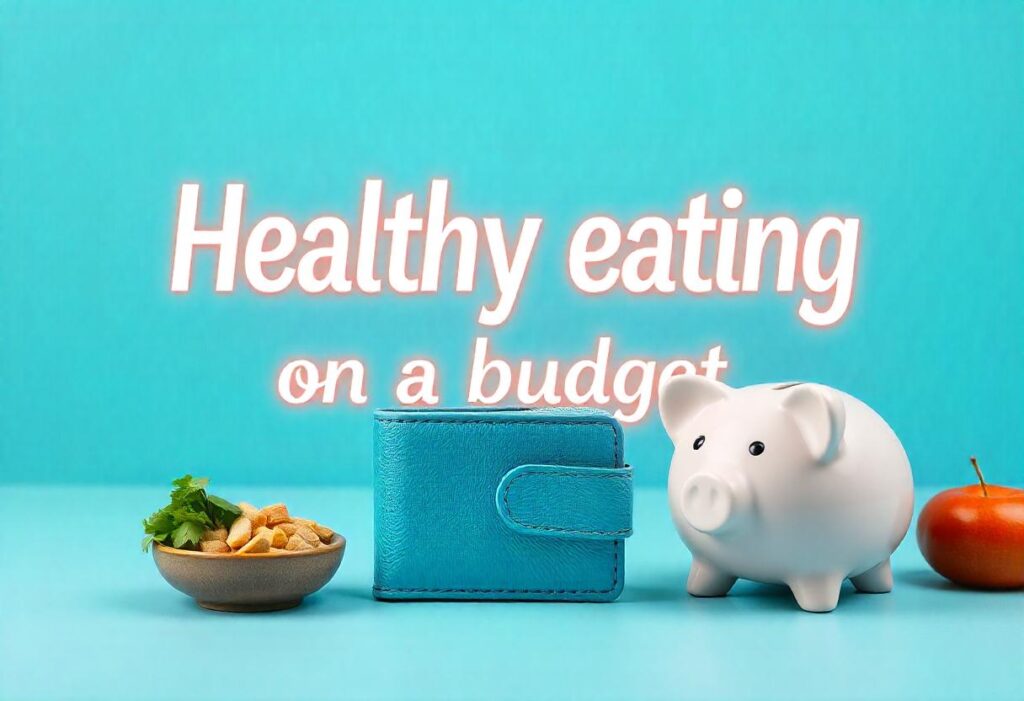Introduction
Maintaining a healthy diet is crucial for overall well-being, but the rising cost of food can make it seem challenging. Many people assume that healthy eating is synonymous with expensive ingredients and specialty stores. However, eating well on a budget is entirely possible with a little planning and creativity. This blog post will explore practical tips and strategies to help you nourish your body without straining your wallet.
Planning and Preparation
- Plan your meals and make a list: The foundation of budget-friendly healthy eating is meal planning. Take some time each week to plan your meals, considering what you already have on hand and what’s on sale. Create a detailed grocery list and stick to it to avoid impulse purchases.
- Cook at home and embrace leftovers: Cooking at home gives you control over ingredients and portion sizes, and it’s significantly cheaper than eating out. Prepare larger batches of meals and enjoy leftovers for lunch or another dinner to save time and money.
- Cook once, eat twice (or more!): Double or triple recipes and freeze the leftovers for future meals. This saves time and ensures you always have a healthy option on hand.
- Pack your lunch: Eating out for lunch can quickly add up. Pack your own lunch with leftovers or simple, healthy ingredients.
Smart Shopping Strategies
- Prioritize whole foods over processed foods: Processed foods are often expensive and less nutritious than whole foods. Focus on incorporating plenty of fruits, vegetables, whole grains, and lean proteins into your diet.
- Shop smart: Compare prices between different stores and brands. Consider buying generic brands, which are often nutritionally equivalent to name brands but more affordable. Look for sales and discounts, and stock up on non-perishable items when they’re on offer.
- Buy in season and consider frozen or canned produce: Seasonal fruits and vegetables are often more affordable and flavorful . Frozen and canned produce can also be budget-friendly options, especially when fresh produce is out of season or expensive.
- Buy in bulk (when it makes sense): Purchasing non-perishable items in bulk can be cost-effective, but only if you’ll use them before they expire.
- Don’t shop when hungry: Avoid grocery shopping when you’re hungry, as this can lead to impulse buys and unhealthy choices.
- Look for “imperfect” produce: Many stores offer discounts on “imperfect” fruits and vegetables that are still perfectly good to eat.
Making the Most of Your Ingredients
- Get creative with plant-based proteins: Meat can be a significant expense. Explore plant-based protein sources like beans, lentils, and tofu, which are budget-friendly and packed with nutrients. Try incorporating meatless meals into your weekly routine.
- Reduce food waste: Be mindful of portion sizes and avoid overbuying. Use leftover vegetables and meat in creative ways, such as soups, stews, or stir-fries.
- Use ingredients wisely: Pair expensive ingredients with inexpensive ones to create balanced and affordable meals.
- Don’t be afraid of leftovers: Leftovers are a great way to save money and reduce food waste. Store them properly and enjoy them for lunch or another dinner.
- The freezer is your friend: Take advantage of your freezer to store leftovers, bulk purchases, and seasonal produce.

Additional Tips for Healthy Eating on a Budget
- Drink water: Water is the most affordable and healthiest beverage. Limit sugary drinks, which can be costly and detrimental to your health.
- Grow your own food (if possible): If you have the space and resources, consider growing your own herbs, vegetables, or fruits.
- Be mindful of portion sizes: Using smaller plates and bowls can help with portion control and prevent overeating, leading to less food waste and cost savings.
- Utilize community resources: Check for community gardens, food co-ops, or farmers’ markets in your area, which may offer fresh produce at lower prices.
- Prioritize nutrient-dense foods: Focus on foods that offer the most nutrients per dollar, such as eggs, canned fish, beans, lentils, and leafy greens.
- Learn to cook from scratch: Cooking from scratch allows you to control ingredients and avoid the added costs and unhealthy additives often found in pre-packaged meals.
- Embrace simple cooking methods: You don’t need fancy equipment or complicated recipes to create nutritious meals. Roasting, steaming, and grilling are simple and budget-friendly cooking techniques.
Conclusion
Eating healthy on a budget is not only possible but also empowering. By adopting mindful shopping habits, embracing home cooking, and prioritizing whole foods, you can create a sustainable and nourishing diet that supports your health and your wallet. Remember, small changes can make a big difference. Start implementing these tips today and enjoy the benefits of affordable, healthy eating!
References:
- 19 Ways to Eat Healthy on a Tight Budget – Healthline
- Healthy eating on a budget – CSIRO
- Health for your wealth: healthy eating on a budget – Metro North Health, Queensland Government
- Budget Bytes

